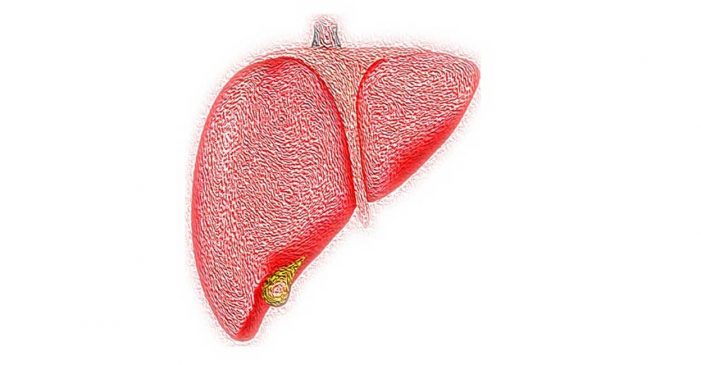Health experts reveal all you all about the early signs of liver diseases that are usually ignored, causes of early death due to liver ailments, prevention tips
Fatty liver disease, also known as steatosis, has emerged as a modern-day pandemic and a significant non-communicable health problem akin to coronary artery disease. This condition entails the excessive accumulation of fat in liver cells, ranging from simple fat deposition (fatty liver) to more severe forms that cause inflammation and scarring (Non-alcoholic steatohepatitis or NASH) while extreme end of spectrum is liver cirrhosis (irreversible liver scarring), leading to liver cell failure, increased liver pressure or liver cancer.
Read More: Dealing with smelly armpits? Try these natural tips to banish odour
In an interview with HT Lifestyle, Dr Prakash Valse of Ruby Hall Clinic in Hinjewadi, shared, “Recent studies, such as the one presented at ENDO 2023, the Endocrine Society’s annual meeting in Chicago, Illinois, have shed light on the escalating rates of fatty liver disease over the past three decades. The burden of this condition is not limited to the United States alone; it poses a significant global health challenge. The risk of metabolic-associated fatty liver disease (MAFLD), formerly known as non-alcoholic fatty liver disease (NAFLD), has increased dramatically. This condition is closely linked to cardiovascular disease, type 2 diabetes, and a common form of liver cancer.”
According to him, diabetes and obesity that are both on the rise worldwide, play a prominent role in exacerbating the prevalence and severity of fatty liver disease. He said, “Diabetes is one of the prime risk factors of fatty liver disease (50-85% prevalence in diabetes across various studies) and furthers the complications of fatty liver disease. Diabetics is more likely to develop rapidly progressive fatty liver disease, leading to permanent liver scarring (cirrhosis) and its life-threatening complications. Liver cirrhosis can cause liver cell failure, liver cancer, high liver pressure (portal hypertension), leading to ascites (fluid in the abdomen) and hepatic encephalopathy (liver coma) due to increased toxins reaching the brain.”
Read More: Hypertension and obesity are risk factors of flat feet. Here are tips to keep in mind
Asserting that recognising the symptoms of liver damage in diabetics is crucial for early intervention, Dr Prakash Valse said, “In the early stages of liver cirrhosis, the indicators can be nonspecific, including leg swelling, increased fatigue, changes in sleep patterns, easy bruising, weight loss, and anemia (low hemoglobin). Laboratory indicators may include low platelet count, hemoglobin, and WBC count, as well as mild elevation of liver enzymes and bilirubin in liver function tests. Abdominal ultrasound during health checkups may reveal a shrunken, nodular liver, an enlarged spleen, or fluid (ascites) in the abdomen.”
Cautioning that fatty liver disease has emerged as a potent risk factor for cardiovascular disease, further amplifying the already substantial global burden of heart-related illnesses, Dr Prakash Valse said, “The coexistence of fatty liver and diabetes places individuals at a higher risk of developing cardiovascular complications, including heart attacks and strokes. This alarming correlation calls for heightened awareness and comprehensive preventive strategies to combat the growing burden of fatty liver disease. If left untreated, fatty liver disease can progress to life-threatening conditions, such as liver cancer and liver failure. The severity of fatty liver disease directly correlates with the risk of these complications. Therefore, early detection and intervention are critical in mitigating the adverse outcomes associated with this silent epidemic.”
In recent years, NAFLD has emerged as the leading cause of liver transplantation worldwide. Dr Prakash Valse said, “The escalating prevalence of fatty liver disease, coupled with the shortage of available organs for transplantation, poses a significant challenge to healthcare systems globally. This underscores the urgent need for public health initiatives and policy measures aimed at prevention, early diagnosis, and effective management of fatty liver disease. Fatty liver disease has evolved into a modern-day pandemic with severe consequences for public health. Its strong associations with diabetes, obesity, cardiovascular disease, and liver cancer highlight the interconnectedness of these non-communicable health problems. As the global burden of diabetes and heart disease continues to rise, the prevalence of fatty liver disease is poised to exacerbate further. Thus, comprehensive efforts are necessary to combat this silent epidemic through early detection, effective management, and robust preventive strategies. By addressing the underlying risk factors and promoting healthier lifestyles, we can collectively strive towards reducing the impact of fatty liver disease on individuals and societies worldwide.”
Read More: Osteoporosis: 7 Nutrients For Your Bone Health Other Than Calcium And Vitamin D
Bringing his expertise to the same, Dr Kunal Adhyaru, Consultant – Hepatology, MBBS, DNB (General Medicine), MNAMS, Fellowship in Hepatology at SRV Hospitals in Dombivli, answered the following questions about liver diseases:
- Even moderate consumption of alcohol can affect the liver so fatty liver is now classified as MET-ALD instead of NAFLD and AFLD for those who consume alcohol occassionally – Is this statement true? Shed light on this. What can prevent liver diseases?
Dr Kunal Adhyaru answered, “Yes, as per the latest scientific data, women are categorised as having Met-ALD if they consume more than 140 gm of alcohol per week, while for men, this threshold is more than 210 gm per week. This classification holds true when a metabolic condition such as diabetes, hypertension, dyslipidemia, or obesity is also present. Preventive measures against liver disease include weight loss in obese individuals and adopting a healthy lifestyle, which involves daily walking lasting between 30 to 45 minutes. It’s important to avoid alcohol, smoking, outside food – especially junk and processed foods and manage conditions like diabetes, hypertension and lipid levels. For those with MASLD (Metabolic dysfunction Associated Steatotic Liver Disease), vaccinations against HBV and HAV can be taken but only under the guidance of a Hepatologist.”
- Causes of early death due to liver ailments
Dr Kunal Adhyaru revealed, “Common causes of premature mortality encompass cardiovascular, kidney, and pulmonary complications, along with hepatocellular carcinoma, particularly in cases of long-standing liver diseases.”
- How to identify safe limits of alcohol consumption?
Dr Kunal Adhyaru insisted, “No amount of alcohol in any form is safe. Many individuals with alcohol-associated liver diseases experience improvement upon stopping alcohol altogether.”
- Early signs of liver issues that are usually ignored
Dr Kunal Adhyaru pointed out, “Early indications of liver problems, which are frequently overlooked, include discomfort or pain in the upper right abdomen, fatigue (especially in the afternoon) and jaundice.”
Dr Akash Shukla, Director – Hepatololgy at Sir HN Reliance Foundation Hospital in Mumbai, stated, “The International societies have now recognised the growing importance of the synergy of the adverse effects of the combination of alcohol and metabolic dysfunction. The metabolic dysfunction includes presence of diabetes, insulin resistance, obesity, dyslipidemia, like high cholesterol and triglycerides, hypertension, etc. Those who have one of these risk factors and also consume alcohol are at much higher risk of developing fatty liver; and more importantly progression of fatty liver to hepatitis, and then finally cirrhosis and liver cancer as compared to somebody who has only one of these two.”
He suggested, “If somebody is having alcohol, and they also have these factors, then the rate of progression is much higher. Similarly, somebody who has fatty liver because of metabolic dysfunction and then starts consuming alcohol, even if it is intermittent, lesser quantity, they are at higher risk of developing progressive liver disease and at risk of developing losses and liver cancer. Therefore, it is advisable that those who have a fatty liver, and have any of these metabolic dysfunctions, should strictly stay away from alcohol completely. Similarly, those who have a fatty liver must be very aggressive in controlling these metabolic risk factors to prevent the progression of the disease. If somebody has alcohol related problems, then it is important that not only they stopped alcohol consumption completely, but they also control their metabolic dysfunctions in order to prevent the progression of liver disease and keep the liver healthy.”





































